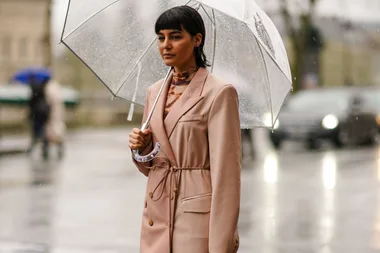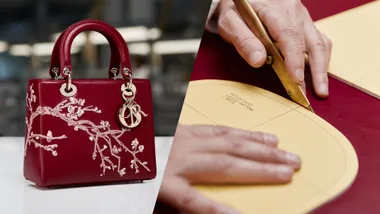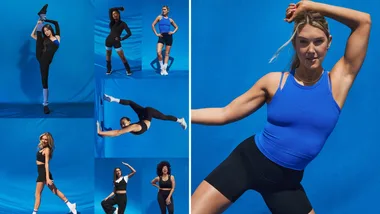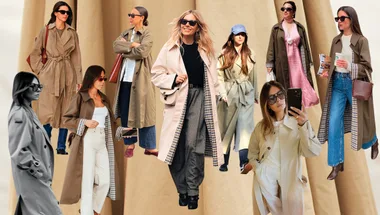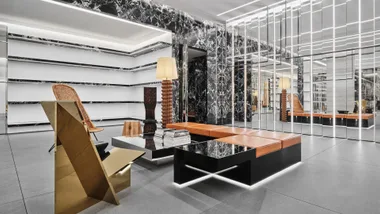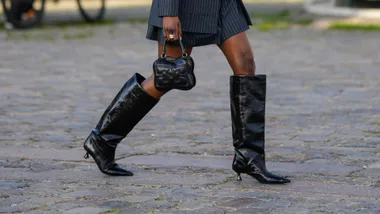While staying on top of trends in the real world can be challenging enough, the rise of cryptocurrency and fashion NFTs have added another dimension to our wardrobes that is entirely worth decoding.
The thrill is the same: the meditative-yet-determined scroll through page after page of fashion e-commerce sites. In search of something for a special occasion, I settle on a glittering, fringed amethyst two-set from Beyoncé favourite Dundas. A little more out there than I would usually go for but I figure it’s a good time to be adventurous.
There’s the dopamine release that comes with “make an offer” that intensifies immediately as it’s accepted—the look is mine. The only thing that’s different? There’ll be no tracked package to tear open, no textile to touch or try on. Far from physical, this look is a matter of pixels, a fashion non-fungible token (NFT) designed to be worn only in a digital space.
Like a Birkin and a waitlist, fashion and the metaverse are perfect—and inevitable—partners. Both ride the zeitgeist, privilege exclusivity and confuse the masses – and major fashion houses are getting in on the action. In 2021, users sent more than $US44.2 billion through NFT marketplaces, a steep rise from $US106 million in 2020.
Gucci was one of the first luxury brands to delve into the NFT universe. The Italian fashion house’s NFT was in the form of a four-minute film inspired by its Aria collection and sold at a Christie’s auction for $US25,000 in June 2021. They’ve since set up branded towns on the metaverse gaming platform Roblox and collaborated with digital artists on the release of further NFT collections. Burberry launched wearable NFTs for its NFT character Sharky B (in the crypto video game Blankos Block Party), which generated more than $US375,000 in sales.
Dolce & Gabbana set records after launching a nine-piece NFT collection during Venice Fashion Week for a total of $US5.7 million. In January, Balmain released its NFT collaboration with Barbie, creating a “phygital” product including three different digital dolls wearing monochromatic pink looks finished with the house’s signature monogram print. It launched with a co-branded physical collection of dresses, T-shirts, jackets and shoes.
The Fédération de la Haute Couture et de la Mode, which runs Paris Fashion Week and Haute Couture Week, recently partnered with Arianee, a leading NFT platform for the luxury and fashion industries, to create NFTs that could be exchanged during Paris Fashion Week’s spring/ summer menswear 2022 shows and other high-fashion exhibitions.
Meanwhile, Prada, Richemont and LVMH joined forces to create the Aura Blockchain Consortium, offering tracing solutions to their customers.
Like perfumes, makeup and accessories, NFTs can allow greater entry-level access to the world of high fashion, offering customers a new way to sample the exclusive domain.
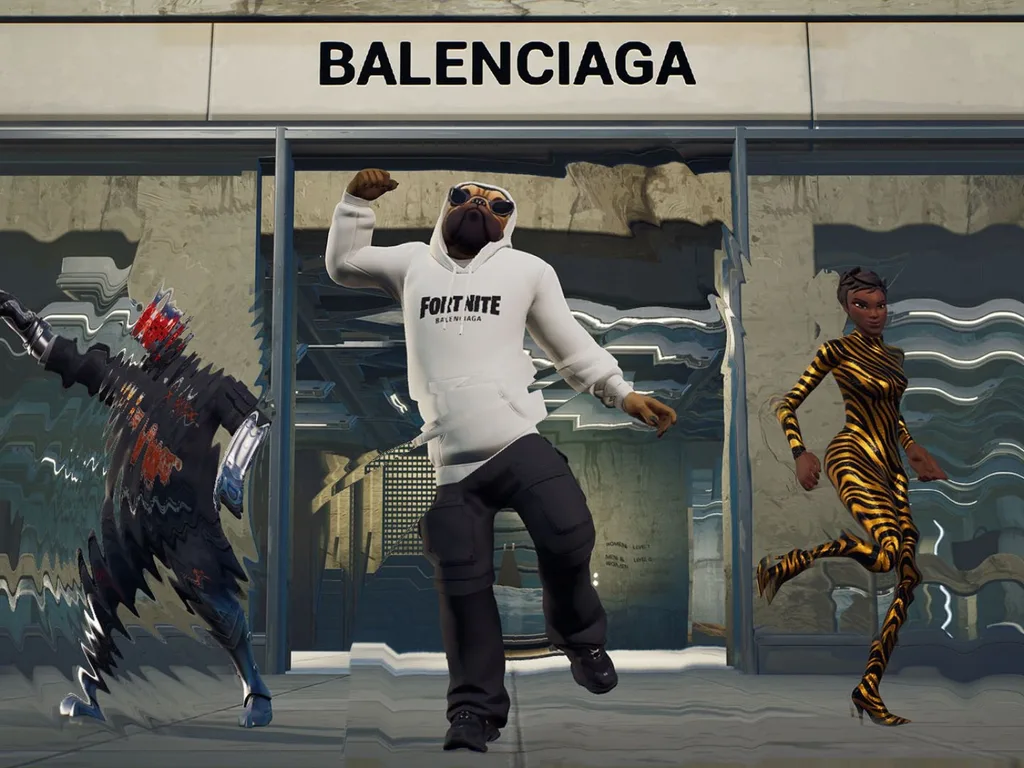
There are Crypto and Metaverse Fashion Weeks partnering with brands such as Dolce & Gabbana, Tommy Hilfiger and Etro, and flagship fashion stores including Gucci and Off-White that are now accepting crypto payments. It seems as though everyone is getting in on the action. But if you’re anything like me, you might feel that although people are busy NFTing, you’re not really sure why or how.
So what are non-fungible tokens? Like Bitcoin, NFTs are considered a form of cryptocurrency. Unlike Bitcoin, they aren’t “fungible” (able to be exchanged for other goods that are of the same value). NFTs are unique, one of a kind and can’t be duplicated, only reacquired when bought from their current owner. An application called blockchain analyses and tracks activity among every NFT buyer and seller, following the logistics and movements of NFTs.
“At the moment, only a small number of people [about 360,000 globally] own NFTs, so brands entering this space are really doing so to either connect with their consumer who is already gaming, or looking to emphasise their position as an innovator to the broader market,” says Melbourne-based luxury business commentator Petah Marian.
“The trend lines suggest that in the future we are likely to spend more time in metaverse-style spaces, which [indicates] that digital goods like NFTs will gain in relevance. As the industry progresses, digital goods are likely to have a deeper intrinsic value, as they have more links to the real world.”
Neuno, an Australian startup and digital platform, encourages its audience to buy, sell, collect and trade NFTs from collaborating designers such as Glenn Martens and Diesel. It has also worked with bodies like the Australian Fashion Council on assisting eight designers to bring their NFTs to the metaverse, and with shoe designer Giuseppe Zanotti for Decentraland’s Metaverse Fashion Week.
On the platform, consumers will be able to use their fashion NFTs in various ways. For example, if you were to buy a dress, you’d be able to try it on virtually, as well as dress your gaming avatar in the same piece.
“The transformation of traditional fashion into its metaverse counterpart, which we call ‘metafashion’, happened and continues to happen very naturally, supporting the overall change in how we live and explore the world around us,” explains Natalia Modenova, a co-founder (with Daria Shapovalova) of digital fashion platform DressX.
“We already became ‘the avatars of ourselves’ in multiple social media channels, messaging and streaming services. Digital fashion is designed to dress our digital selves. We believe that in the future every fashion brand – luxury, haute couture, streetwear, everyone – will own a digital fashion line and every person will have a digital fashion wardrobe; we call it metacloset.”

With a goal to “digitally dress up a billion people”, DressX had to respond to its users’ rapidly growing interest in NFTs within the first few months of launching mid-2020. Since then, the company has dropped multiple collaborations in the NFT space, including with Jason Wu and crypto.com.
So high was the demand, it launched the first and only NFT marketplace for wearable digital fashion, a space in which to shop, buy, resell and “wear” NFTs – kind of like the Net-a-Porter of NFTs. The platform’s big picture aim is to provide an “endless digital closet” to any and all who desire one for their digital presence and empower 3D and fashion designers to grow professionally.
At present, the platform’s consumers are international—largely from the US, Europe and Eastern European countries – with the main age groups being 18-24 and 25-34, though Shapovalova is careful to note that digital fashion is used by people of all ages, genders and nationalities. They come primarily from social media such as Instagram, TikTok and Twitter, as well as gaming, video calls and XR (augmented and virtual reality), groups she says are “growing fast”.
“The freedom [the] digital fashion industry creates will definitely influence the way people consume and use fashion,” says Shapovalova.
“While some people use digital clothing simply to experiment with their looks or enhance their old pictures, others use it as an opportunity to be the people they have always dreamt [of].”
According to Sasha Wallinger, a former marketing executive who specialises in translating fashion into different modalities and who worked on the Gucci x Superplastic “SuperGucci” NFT collaboration for Gucci’s 100th anniversary last year, this new group of consumers are simply seeking to express themselves and how they live to the world by what they wear in the digital space. They are interested in developing “digital twinning” and creating a character, almost like a stylist might.
“In Fortnite, the Balenciaga hoodie was huge,” says Wallinger of the digital-to-physical Balenciaga collaboration with the online video game Fortnite – the first time the platform allowed a high-fashion brand into its universe. Players could outfit their avatars in the new Balenciaga collection, as well as shop the collection in Balenciaga bricksand-mortar stores. “As with fashion, there is still this impetus to show and share, it’s just that we’re showing and sharing in different ways,” she says.

Wallinger, a woman in an all-too-often male-dominated field, underlines how important it is for more of us to “lean in” to the metaverse.
“I really advocate for women to be informed about even just a component of Web3: augmented reality, virtual reality, graphic design – there are so many phenomenal woman artists who are having a legacy in the NFT space.”
Indeed, smart contracts allow the artists to be truly compensated for their work for the first time, in a decades-spanning culture of copy/ paste and uncredited work shared on social channels. Web3 spaces are also, Wallinger explains, very inclusive.
“LGBTQ+ and gender fluidity occurs freely in these spaces, a huge component for women and non-binary individuals coming into these ecosystems and feeling free to be who they are in many ways,” she says.
So for those of us who have been thus-far reticent to toe-dip into the NFT pool, what’s the right way in? “You just have to purchase them. There’s no two ways about it,” says Wallinger.
“Pick a project that resonates with you. I look for aestheticism and how it relates to who you are as an individual, just like if you were purchasing a garment or an accessory in real life. Just go for what you love.”
This story originally appeared in the September issue of marie claire.

